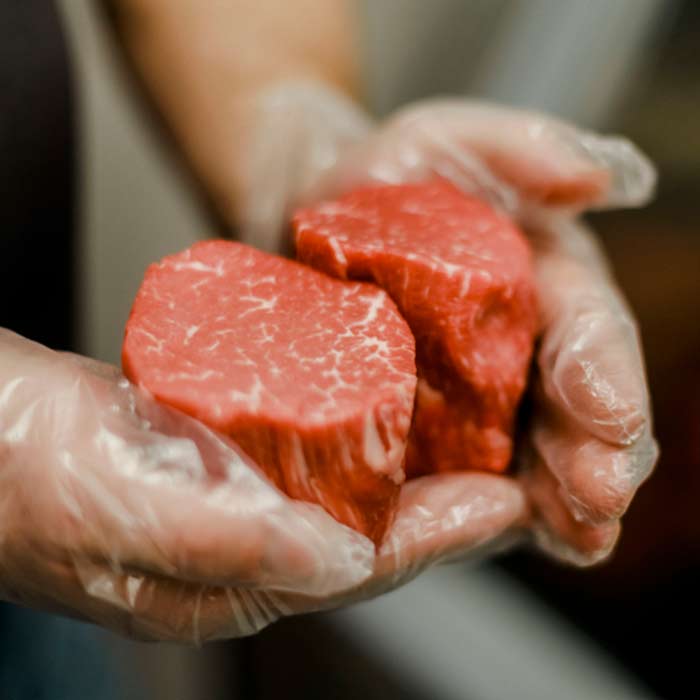The Nutritional Advantages of Incorporating Beef Tallow Into Your Diet Regimen
Beef tallow has amassed interest for its one-of-a-kind dietary account, which includes an abundant variety of crucial fatty acids and fat-soluble vitamins that can sustain total health and wellness. The implications of including this conventional fat into modern dietary techniques invite a closer evaluation of its potential advantages and disadvantages.
Nutrient Profile of Beef Tallow
Beef tallow flaunts an abundant nutrient profile that makes it a beneficial enhancement to various diet plans. Largely made up of monounsaturated and saturated fats, beef tallow is roughly 50-60% hydrogenated fat, which adds to its security at high cooking temperatures. This attribute makes it an exceptional choice for toasting and frying, as it stands up to oxidation and retains its nutritional quality.

Moreover, beef tallow is devoid of trans fats, making it a much healthier option to several veggie oils. Its nutrient thickness not only supplies energy but additionally aids in the absorption of nutrients from various other foods. As a traditional cooking fat, beef tallow can improve the flavor of recipes while contributing to overall dietary consumption, aligning well with numerous nutritional choices, consisting of ketogenic and low-carb diets.
Wellness Conveniences of Healthy And Balanced Fats
Including healthy and balanced fats like those discovered in beef tallow into the diet regimen can yield numerous health advantages that support total health. Healthy fats play a critical function in maintaining cellular structure, hormone manufacturing, and nutrient absorption. They are essential for optimal brain function, as the mind is made up of nearly 60% fat, mainly healthy fats.
One significant benefit of healthy fats is their payment to heart health and wellness (where to buy beef tallow). In contrast to out-of-date beliefs that all fats contribute to cardiovascular condition, research studies show that healthy fats can enhance cholesterol degrees and decrease inflammation, eventually decreasing the danger of heart problem. Additionally, fats, such as those discovered in beef tallow, are a steady resource of energy, supplying sustained fuel for exercises and metabolic procedures
Furthermore, healthy and balanced fats can aid in weight management by promoting satiation, which can aid decrease overindulging. They additionally support the absorption of fat-soluble vitamins, consisting of A, D, E, and K, boosting general nutrient uptake. By integrating beef tallow and other healthy fats into the diet regimen, people can enhance their nutritional account while enjoying a wide variety of health benefits that cultivate longevity and vitality.

Food Preparation With Beef Tallow
Cooking with beef tallow supplies a delicious and functional choice for a range of culinary applications. This provided fat, originated from beef, boasts a high smoke factor of about 400 ° F(204 ° C ), making it suitable for frying, sautéing, and roasting - where to buy beef tallow. Its durable taste boosts dishes, presenting an abundant, full-flavored high quality that complements numerous components
Beef tallow is particularly fit for typical food preparation methods, such see post as deep frying, where it can produce an excellent crust on vegetables and meats. The fat's capability to hold up against heats without breaking down makes sure that you attain crunchy appearances while retaining moisture within the food. Furthermore, its steady nature indicates it can be recycled numerous times for frying, making it an affordable selection for home chefs and specialist kitchen areas alike.
In baking, beef tallow can work browse around this site as a replacement for butter or reducing, offering an unique depth of taste to breads and pie crusts. It can be incorporated into gravies and sauces, enriching their preference and giving a luscious mouthfeel. By accepting beef tallow in your food preparation repertoire, you can boost your meals while utilizing its dietary benefits.
Contrasts With Various Other Fats
When evaluating cooking fats, beef tallow stands apart in contrast to various other usual alternatives such as veggie oils, butter, and lard. Among one of the most remarkable differences is the fat structure. Beef tallow is mainly composed of monounsaturated and saturated fats, which are more secure at high temperature levels, making it much less vulnerable to oxidation than polyunsaturated vegetable oils. This security enhances its suitability for frying and sautéing, where higher warmth is frequently utilized.
In contrast, while butter contains beneficial nutrients like fat-soluble vitamins, it has a reduced smoke factor and can melt quickly. Lard, similar to tallow, has a desirable fat profile yet may contain higher degrees of polyunsaturated fats, depending upon the pig's diet plan.

Vegetable oils, typically marketed as healthier alternatives, can be extremely processed and contain trans fats, which have actually been connected to damaging wellness effects. In addition, the omega-6 fatty acids prevalent in several veggie oils can add to swelling when consumed over. Generally, beef tallow supplies a special equilibrium of taste, security, and nutritional advantages that can make it a preferable selection in various cooking applications.
Integrating Beef Tallow Into Foods
Beef tallow can be flawlessly incorporated right into a variety of dishes, improving both flavor and dietary worth. This made fat, abundant in monounsaturated fats and vitamins A, D, E, and K, functions as a flexible cooking tool. It is excellent for high-heat applications such as frying and roasting, where it can impart a savory deepness to vegetables, meats, and also baked items.
When sautéing, think about using beef tallow as opposed to traditional oils visit homepage to boost the taste of stir-fries or veggie medleys. For a heartier flavor, try integrating it right into mashed potatoes or luscious sauces, where its abundant consistency can create an elegant mouthfeel. Additionally, beef tallow can be utilized as a base for sauces, including a durable taste account that complements a variety of recipes.
For those exploring baking, replacing beef tallow for butter or reducing in pie crusts can produce a flaky, tasty outcome. When grilling, brushing tallow on meats can boost moisture retention and supply a wonderful sear. By thoughtfully including beef tallow right into your dishes, you can take pleasure in not only improved flavors but additionally the amazing nutritional advantages it offers.
Conclusion
Incorporating beef tallow right into the diet gives considerable nutritional advantages, consisting of essential fatty acids and fat-soluble vitamins that enhance total wellness. In general, the assimilation of beef tallow right into meals can sustain health and wellness and well-being, making it a valuable enhancement to a well balanced diet plan.
Largely composed of saturated and monounsaturated fats, beef tallow is approximately 50-60% saturated fat, which contributes to its stability at high cooking temperatures. As a conventional cooking fat, beef tallow can boost the taste of dishes while adding to general nutritional intake, straightening well with various dietary preferences, including low-carb and ketogenic diet plans.
Incorporating healthy fats like those discovered in beef tallow into the diet regimen can generate countless health and wellness benefits that sustain total well-being. By including beef tallow and various other healthy and balanced fats right into the diet, people can enhance their dietary profile while taking pleasure in a wide variety of wellness benefits that promote longevity and vigor.
When assessing food preparation fats, beef tallow stands out in contrast to other common alternatives such as vegetable oils, butter, and lard.